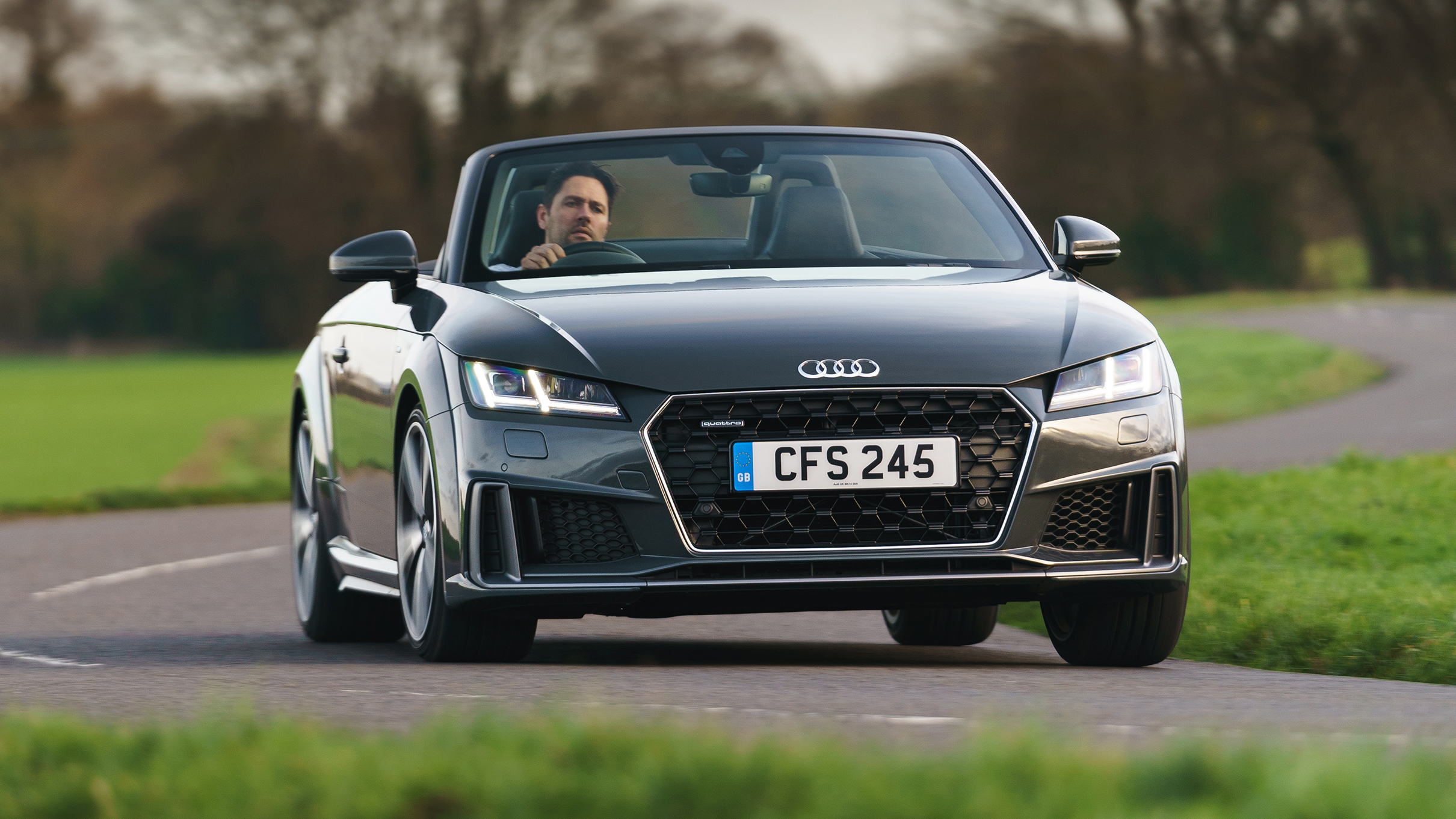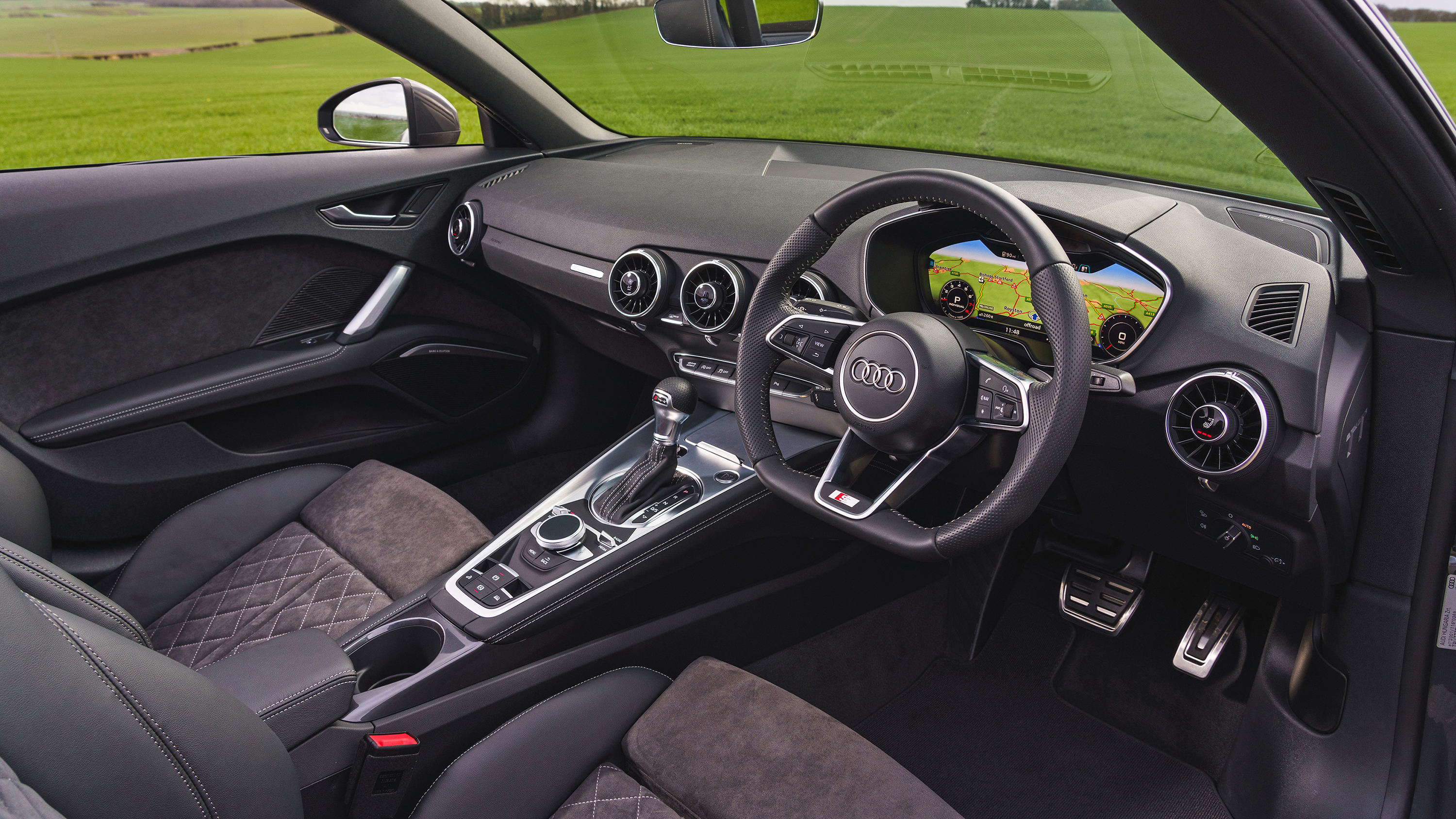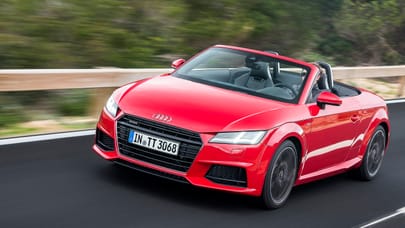
Driving
What is it like to drive?
Let’s start with the engine. It’s very compliant. It obeys the EU6 emissions regulations, receives a new particulate filter, and is fully WLTP literate. At its cleanest it emits 143g/km of CO2 and manages 39.8mpg. You only pay a 10g/km and 2mpg penalty for the extra 48bhp of the 45TFSI.
But the trouble is that the engine in the standard TT Roadster is rather dull. The WLTP regs have strangled it, so the 245bhp feels curiously sedate. It’s hard to imagine it matching the claimed 5.5secs to 62mph. Unlike the 90kg lighter coupe, it’s not hungry for revs or vigorous in its manners. In short, in this incarnation, it’s not a sports car motor.
Surprised? Of course you’re not, because the TT Roadster, even in wound-up 306bhp TT S guise, isn’t a sports car. Not really. It might be quick across the ground, but it’s not a deliverer of thrills and goosebumps. Twas ever thus.
Power builds progressively from 2,000rpm, fed in more gently than before. It’s easier to apportion as a result, but the wallop at 2,000rpm has gone. Probably just as well if yours is a front-driver. The redline is 6,800rpm, the engine is smooth (there’s a balancer shaft), but there’s little aural stimulation beyond a raspy buzz of noise and a slight upshift pop. And although Audi claims the TT’s short geared to improve acceleration, third still runs to 90mph.
We haven’t driven a manual. The twin-clutch is smooth and surreptitious, manual selection prompt if you want it, plus there’s start/stop and launch control built in. More tactile paddles would be nice. The brakes do the job, are quite potent even, but there’s little feel through the pedal. Ditto the steering. That, like the powertrain, quattro system (if applicable) and engine note, can be cycled between Comfort and Dynamic modes. The car does feel a little weightier in the hands and sharper to react in Dynamic. Magnetic ride adaptive dampers are an option. I’m not sure you need them. The standard set-up is pretty good, the ride hitting a decent balance of control, comfort and tautness.
Quattro claims to send up to 100 per cent of torque to either axle. In practice it feels 60:40 almost all the time. Turn-in is prompt – it’s the most eager facet of the whole car. It grips well and carves a crisp edge through corners. You get precision from the steering but not communication.
The back end just trails around behind, there’s precious little throttle adjustability and you have to be patient coming out of corners or the nose will push wide sooner than you want. It’s safe and predictable. No evidence of a GSOH. With quattro there’s plenty of traction, but it’s only ever the front end that’s going to give way.
There is a dash of structural shake, a very faint tremor in the steering column, enough to distort into the TT’s road manners, to knock it out of focus a touch. The coupe is markedly better here, lighter on its feet and more agile. The roadster is less able to contain the swells and pitching of your average B-road, it isn’t quite as calm when cruising.
But the suspension is quiet, the ride nicely cushioned for the most part and the roof very well insulated; if you’re searching for an undemanding roadster, it’ll do the job, and cruise at 35mpg. It’s easy at low speed too – the throttle’s not snatchy, the turning circle is good. Overall it’s not super-refined, but it’ll munch distance and allow you to hear your podcasts – especially if you’ve ticked the £895 Bang & Olufsen box.
Dynamically it’s a car searching for a role. Not as mature as a Z4 or SLC, not in the same league as a Boxster for tactility and playfulness. The whole car is inert and unambitious, content to be broadly competent.
Variants We Have Tested
Trending this week
- Car Review
BMW iX3









